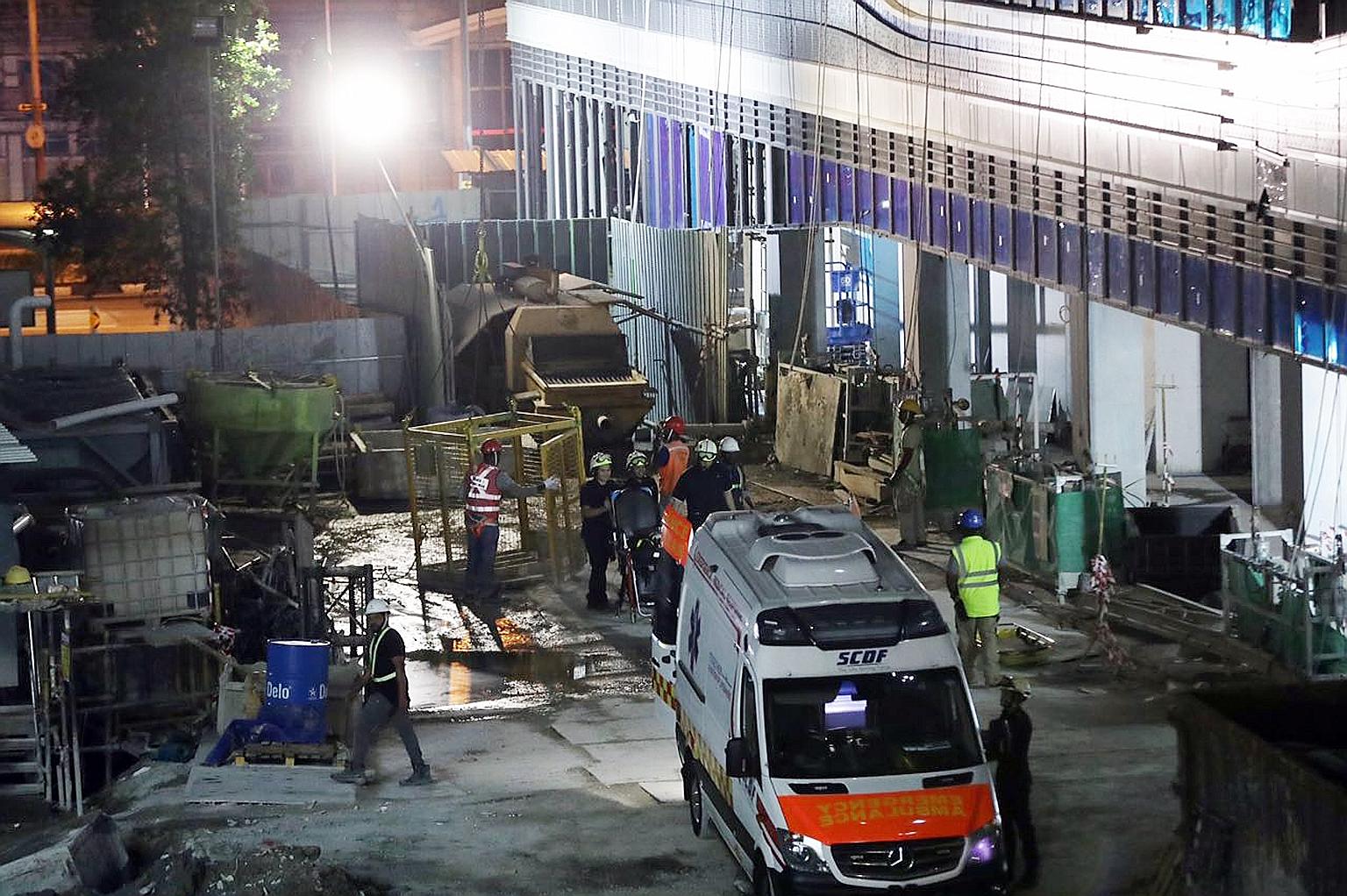Workplace deaths hit 13-year low; illnesses up
Fatalities fall to 42 cases last year, as focus shifts to occupational diseases which rose 9%
Sign up now: Get ST's newsletters delivered to your inbox

Singapore Civil Defence Force personnel at a Jalan Sultan worksite on Feb 5 following an accident in which a 41-year-old construction worker died after his neck was pierced by a reinforcing bar. Last year's drop in workplace deaths brings the fatality rate to 1.2 for every 100,000 employees, which meets the national target set in 2008 of having a rate of less than 1.8 for every 100,000 employees by this year.
ST PHOTO: KELVIN CHNG
Seow Bei Yi
Follow topic:
With the rate of workplace deaths plunging to a 13-year low last year, the spotlight now has moved to the growing frequency of workplace illnesses.
Ministry of Manpower (MOM) figures released yesterday showed that the number of occupational diseases shot up to 799 cases last year, an annual rise of 9 per cent.
The top three diseases - musculoskeletal disorders, noise-induced deafness and skin diseases - all registered increases. Together, they made up more than 90 per cent of the cases.
The biggest jump was in occupational skin diseases, which soared 66 per cent to reach 78 cases.
The MOM said it plans to step up its programmes targeting these diseases. These include efforts to reduce excessive noise at the source, improve ergonomics and strengthen the management of hazardous chemicals at workplaces.
Workplace Safety and Health Institute executive director Gan Siok Lin said: "There is a need to manage workplace health the same way we manage workplace safety.
"Health affects safety and vice versa, so companies should take an integrated approach to enhance both their safety and health management capabilities."
Mr Zephan Chan, head of occupational hygiene at consulting firm IOM Singapore, suggested the rise in workplace illnesses could be a sign that more workers realise their health conditions are work-related.
Instead of brushing them off as a small matter, they now seek medical attention, he added.
"Since 2013, we have seen a 20 per cent increase in requests for ergonomics audits and workplace assessments on risks of musculoskeletal diseases. Such awareness is good for the industry."
Mr Raj Singh, founder of consulting firm Safety@Work, said there was a need for better education on the risks of occupational diseases, particularly among smaller firms.
Meanwhile, work-related deaths fell from 66 to 42 cases last year.
This brings the fatality rate to 1.2 for every 100,000 employees - the lowest since 2004, when comparable figures were first reported.
It also meets the national target, set in 2008, of having a rate of less than 1.8 for every 100,000 employees by this year.
Many sectors saw fewer workplace deaths. In construction, which has the most deaths, the number halved last year to 12.
Non-fatal injuries have also fallen since 2016. Major injuries dipped 3 per cent to 574 cases, while minor injuries fell 4 per cent to 11,882 cases.
In all, the ministry carried out about 16,000 inspections last year and issued 71 stop-work orders, more than 1,200 fines and over 9,000 notices of non-compliance.
"We will sustain the pace of enforcement operations and engagement in 2018," it said.
Workplace Safety and Health Council general manager Patrick Han said his organisation will keep striving to instil in people a mindset of prevention through Vision Zero - recognising "that all ill health and accidents are preventable".

